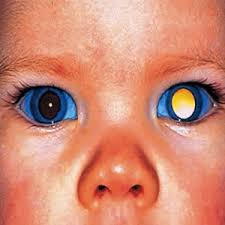Retinoblastoma is cancer of the eye. It begins in the retina, the layer of nerve cells lining the back of the eye. It happens when nerve cells in the retina change, growing in size and number. The cells eventually form a tumor.
Symptoms:
Retinoblastoma mostly affects infants and small children, symptoms are rare. Signs you may notice include:
- A white color in the center circle of the eye (pupil) when light is shone in the eye, such as when taking a flash photograph
- Eyes that appear to be looking in different directions
- Eye redness
- Eye swelling
Causes:
Retinoblastoma occurs when nerve cells in the retina develop genetic mutations. These mutations cause the cells to continue growing and multiplying when healthy cells would die. This accumulating mass of cells forms a tumor.
Retinoblastoma cells can invade further into the eye and nearby structures. Retinoblastoma can also spread (metastasize) to other areas of the body, including the brain and spine.
Genetic mutations:
Retinoblastoma can occur in one or both eyes and is caused by a genetic mutation called RB1. The mutation can be hereditary meaning it is passed from parent to child or spontaneous and all children with retinoblastoma will have a genetic evaluation to find out which type of gene they possess.
Treatment:
Retinoblastoma treatment depends on if one or both eyes are affected as well as if there has been any tumor spread into the adjacent structures of the eye or beyond. Treatment options include
- removal of the affected eye, called enucleation
- chemotherapy
- and radiation.






